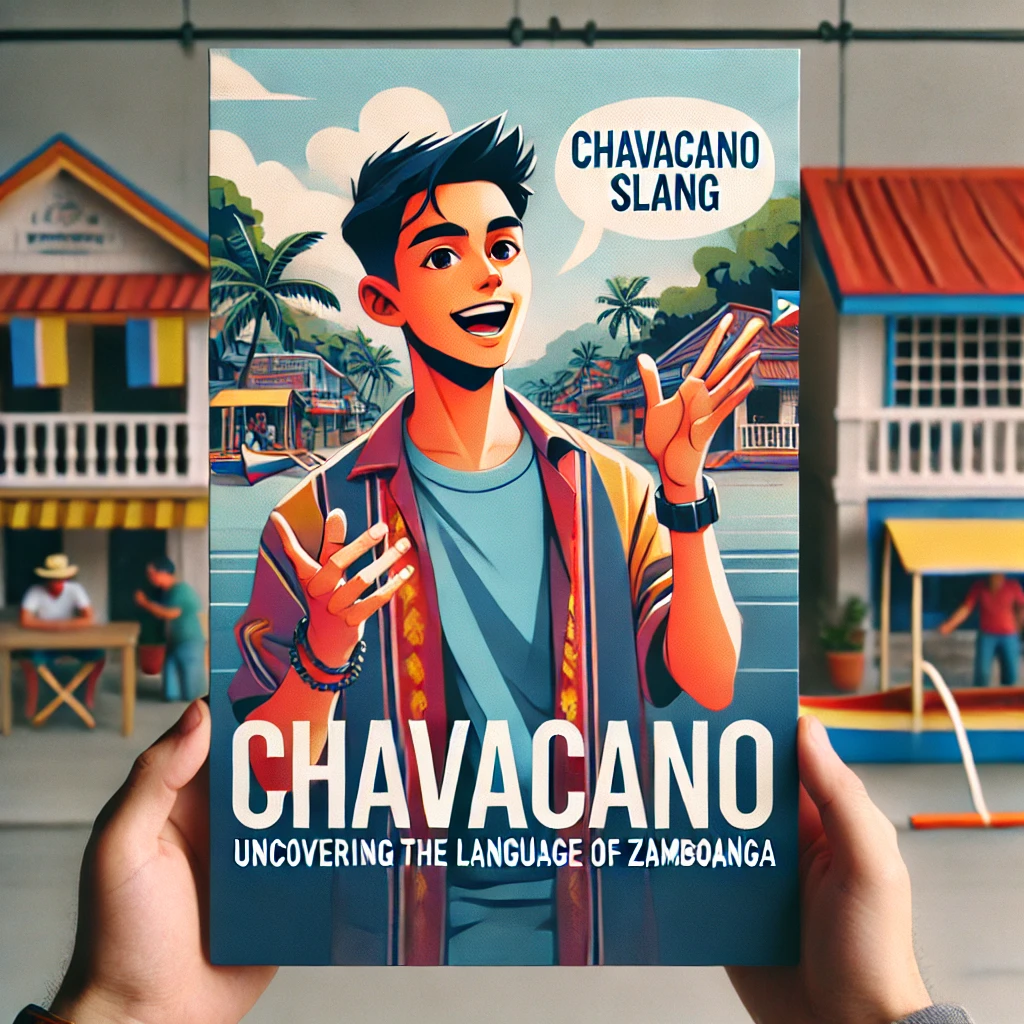Hey there, mga ka-tropa! Ready to dive into the wild world of Filipino slang? Buckle up, because we’re about to take a rollercoaster ride through the colorful landscape of Pinoy lingo. You might think slang is just a bunch of random words thrown together by cool kids trying to confuse their parents, but let me tell you, it’s so much more than that. In the Philippines, slang isn’t just a way of speaking – it’s a cultural phenomenon that reflects our history, values, and the ever-evolving Filipino identity. From the streets of Manila to the beaches of Boracay, slang is the secret sauce that adds flavor to our daily conversations and brings us together as a nation. So, let’s explore how these quirky words and phrases have become an integral part of what it means to be Pinoy. Trust me, by the end of this blog, you’ll be slinging slang like a pro and understanding why it’s such a big deal in the Land of the Morning.
A Brief History of Filipino Slang: From Spanish Colonization to TikTok Trends
The Roots of Pinoy Slang
Alright, time for a quick history lesson – but don’t worry, I promise it won’t be as boring as your high school textbooks! Filipino slang didn’t just pop up overnight like mushrooms after a rainy season. It’s been brewing in our linguistic cauldron for centuries, influenced by the various cultures that have left their mark on our archipelago. When the Spanish conquistadors arrived in the 16th century, they didn’t just bring their fancy hats and cool ships – they also introduced a whole bunch of words that we’ve since twisted and turned into our own unique expressions. Fast forward to the American colonial period, and we’ve got another layer of linguistic influence that’s shaped our slang. And let’s not forget our Asian neighbors – Chinese, Japanese, and Malay words have all snuck their way into our everyday lingo. It’s like our language decided to throw a party and invited everyone!
The Evolution of Pinoy Slang
Now, if you think slang is just a modern thing, think again! Our grandparents and great-grandparents were probably throwing around cool phrases that would make us scratch our heads today. But it’s true that slang has really taken off in recent decades. The 1970s and 1980s saw the rise of “Jeproks” slang, named after the backwards spelling of “project” – a nod to the government housing projects where a lot of this urban lingo originated. Then came the era of “Jologs” in the 1990s and early 2000s, bringing us gems like “echos” (joke) and “chika” (gossip). And now? We’re living in the age of internet slang, where words spread faster than fake news on Facebook. From text messaging abbreviations to viral TikTok phrases, our slang game is stronger than ever. It’s like our language is on steroids, constantly pumping out new words and phrases that keep even the most hip titos and titas on their toes.
The Many Flavors of Filipino Slang: A Linguistic Buffet
Regional Variations: Slang from North to South
One of the coolest things about Filipino slang is how it varies from region to region. It’s like a linguistic buffet – every area has its own special dish to bring to the table. Up north in Ilocos, you might hear “ading” used as a term of endearment, while down south in Cebu, “bai” is the go-to word for addressing a friend. In Manila, “pare” is the classic way to call out to your buddy, but head to Davao and you’ll hear “tol” instead. It’s not just different words, either – sometimes the same slang term can mean completely different things depending on where you are. It’s like a fun little trap for travelers – use the wrong slang in the wrong place, and you might end up with some very confused looks or, worse, unintentionally insulting someone’s lola!
Generational Gaps: OK Boomer, Meet Cheugy
If you’ve ever tried to explain a meme to your parents, you know the struggle of generational slang differences. It’s not just a Filipino thing, but we sure do take it to the next level. The slang your lolo used back in the day might sound like a foreign language to you now. And let’s be real, half the words the kids are using these days sound like they’re speaking in code. “Petmalu” for amazing? “Lodi” for idol? It’s enough to make your head spin! But that’s the beauty of slang – it’s always changing, always evolving, keeping our language fresh and exciting. Just when you think you’ve got a handle on the latest lingo, a new batch of words comes along to make you feel old all over again. It’s like trying to keep up with the latest dance craze – exhausting, but kind of fun if you don’t take it too seriously.
The Impact of Slang on Filipino Culture: More Than Just Words
Slang in Media: From Noontime Shows to Netflix
Turn on any Filipino TV show or movie, and you’re bound to hear a slang-fest that would make your English teacher cringe (in a good way, of course). Our media has embraced slang with open arms, using it to create characters that feel authentic and relatable. Noontime shows are practically slang universities, with hosts tossing around the latest buzz words like they’re giving away prizes. And don’t even get me started on Filipino movies – from the iconic lines of ’90s teen flicks to the witty banter in today’s rom-coms, slang is the secret ingredient that gives our cinema its distinct flavor. Even when we’re trying to be fancy and international with our Netflix series, you can bet there’s going to be some uniquely Pinoy slang sneaking its way into the dialogue. It’s like our cultural calling card – you might not understand every word, but you’ll definitely know it’s Filipino!
Slang in Business: From Sari-Sari Stores to Startups
You might think slang has no place in the serious world of business, but in the Philippines, it’s all part of the package. Walk into any sari-sari store, and you’ll hear a colorful mix of local slang and business jargon that would make any MBA graduate’s head spin. But it’s not just in small, local businesses – even big corporations are getting in on the slang game. Marketing campaigns are peppered with catchy slang phrases, trying to connect with the masses and prove they’re “one of us.” And in the world of startups? Forget about it! It’s like they’re competing to see who can use the most slang in their pitch decks. “We’re disrupting the market with our game-changing, beshie-approved app!” It’s a fine line between sounding hip and trying too hard, but when done right, slang can be a powerful tool in the business world. After all, nothing says “trust me with your money” like dropping a well-timed “Pak ganern!” in your sales pitch, right?
The Psychology of Slang: Why We Can’t Stop Won’t Stop
Identity and Belonging: Slang as a Social Glue
Ever wonder why we love using slang so much? It’s not just because it’s fun to say “charot” instead of “just kidding” (although that is pretty fun). Slang plays a huge role in how we form our identities and connect with others. It’s like a secret handshake or a members-only club – when you use the right slang, you’re signaling that you’re part of the group. Whether it’s teenagers trying to separate themselves from the adults, college students bonding over shared experiences, or professionals in specific fields developing their own lingo, slang helps us find our tribe. It’s a way of saying, “Hey, I get you, and you get me.” In a country as diverse as the Philippines, where we have so many languages and dialects, slang becomes this amazing unifying force. It doesn’t matter if you’re from Luzon, Visayas, or Mindanao – drop a well-timed “Sana all” and you’ll instantly have a connection with Filipinos from all walks of life.
Creativity and Humor: The Art of Slang-Making
Let’s face it – Filipinos are natural-born comedians, and our slang is proof of that. The way we come up with new slang words and phrases is nothing short of an art form. We take words, flip them backwards, mash them together, add suffixes willy-nilly, and somehow end up with expressions that are hilarious, clever, and uniquely Pinoy. Take “hodyang” for example – it’s “diyahe” (embarrassing) spelled backwards with a dash of extra flair. Or “taglish” – our genius way of blending Tagalog and English into a linguistic smoothie that somehow makes perfect sense to us. And don’t even get me started on how we turn brands into verbs – “i-Colgate mo na yan” (brush your teeth) is peak Filipino creativity. This constant wordplay keeps our language alive and evolving. It’s like we’re all participating in this massive, never-ending improv game, where the goal is to come up with the most clever, funny, and catchy new slang. And the best part? Everyone’s invited to play!
The Future of Filipino Slang: Trending Towards Tomorrow
Digital Influence: How Technology is Shaping Our Slang
Hold onto your smartphones, folks, because the internet is taking our slang game to a whole new level! With social media, messaging apps, and online gaming becoming such a huge part of our daily lives, it’s no surprise that they’re having a major impact on how we speak. We’re seeing a whole new breed of digital slang emerging, from text speak like “G2G” (got to go) and “HM” (how much) to emojis that have practically become words in their own right. 🙄 And let’s not forget the power of memes – they’re like slang in visual form, spreading new phrases faster than you can say “Pinoy pride.” But it’s not just about adopting global internet slang – we’re putting our own Pinoy twist on it. “Lambanog” instead of “bungol” for when someone’s not replying to messages? Pure genius. As we move further into the digital age, expect to see even more tech-inspired slang popping up in our everyday conversations. Who knows, maybe in a few years we’ll all be communicating in a mix of emojis, hashtags, and backwards Tagalog!
Global Influence: Exporting Pinoy Slang to the World
Watch out, world – Filipino slang is going international! Thanks to the growing Filipino diaspora and the power of the internet, our unique brand of lingo is spreading far beyond our shores. Filipino words are popping up in urban dictionaries around the globe, and it’s not just limited to areas with large Filipino communities. From “kilig” making its way into Oxford Dictionary to “gigil” being used by K-pop fans, our slang is slowly but surely infiltrating global pop culture. And it’s not just individual words – entire Pinoy slang phrases are being adopted and adapted by non-Filipinos who find them expressive and fun to use. It’s like we’re exporting a little piece of our culture with every slang term that catches on overseas. So the next time you hear a foreigner exclaim “Ay nako!” or ask “Ano ba yan?”, don’t be surprised – it’s just another sign that Filipino slang is taking over the world, one catchy phrase at a time!
Slang-tastic Future Ahead
As we wrap up this wild ride through the world of Filipino slang, one thing is clear – our love for creative, fun, and expressive language is here to stay. From its historical roots to its digital future, slang continues to play a crucial role in shaping Filipino identity. It’s more than just words – it’s a reflection of our adaptability, our humor, and our unique way of looking at the world. So the next time someone tells you to stop using slang and speak “properly,” just remember – you’re not just using cool words, you’re participating in a living, breathing part of Filipino culture. Keep slinging that slang, Pinoy peeps – it’s what makes our language, and our identity, truly special.
To sum up the awesomeness of Filipino slang, here’s a quick table of some iconic slang terms and their meanings:
| Slang Term | Meaning | Origin/Era |
|---|---|---|
| Jeproks | Cool, hip | 1970s (backwards “project”) |
| Chika | Gossip | 1990s |
| Petmalu | Amazing | 2010s (backwards “malupet”) |
| Lodi | Idol | 2010s (backwards “idol”) |
| Beshie | Best friend | 2010s |
| Charot | Just kidding | 2000s |
| Jowabelles | Girlfriend/boyfriend | 2020s |
So there you have it, folks – a deep dive into the slangtastic world of Filipino identity. Whether you’re a slang master or just starting to dip your toes into the wonderful world of Pinoy expressions, remember that every time you use slang, you’re keeping our language alive and kicking. Now go forth and spread the slang love – charot! (Or not. You do you, fam.)
Disclaimer: This blog post is based on cultural observations and linguistic trends up to 2022. Slang evolves rapidly, and some terms may have changed in usage or popularity since then. If you spot any inaccuracies or have updates on current slang trends, please let us know so we can keep this information as fresh as your lola’s pandesal!




